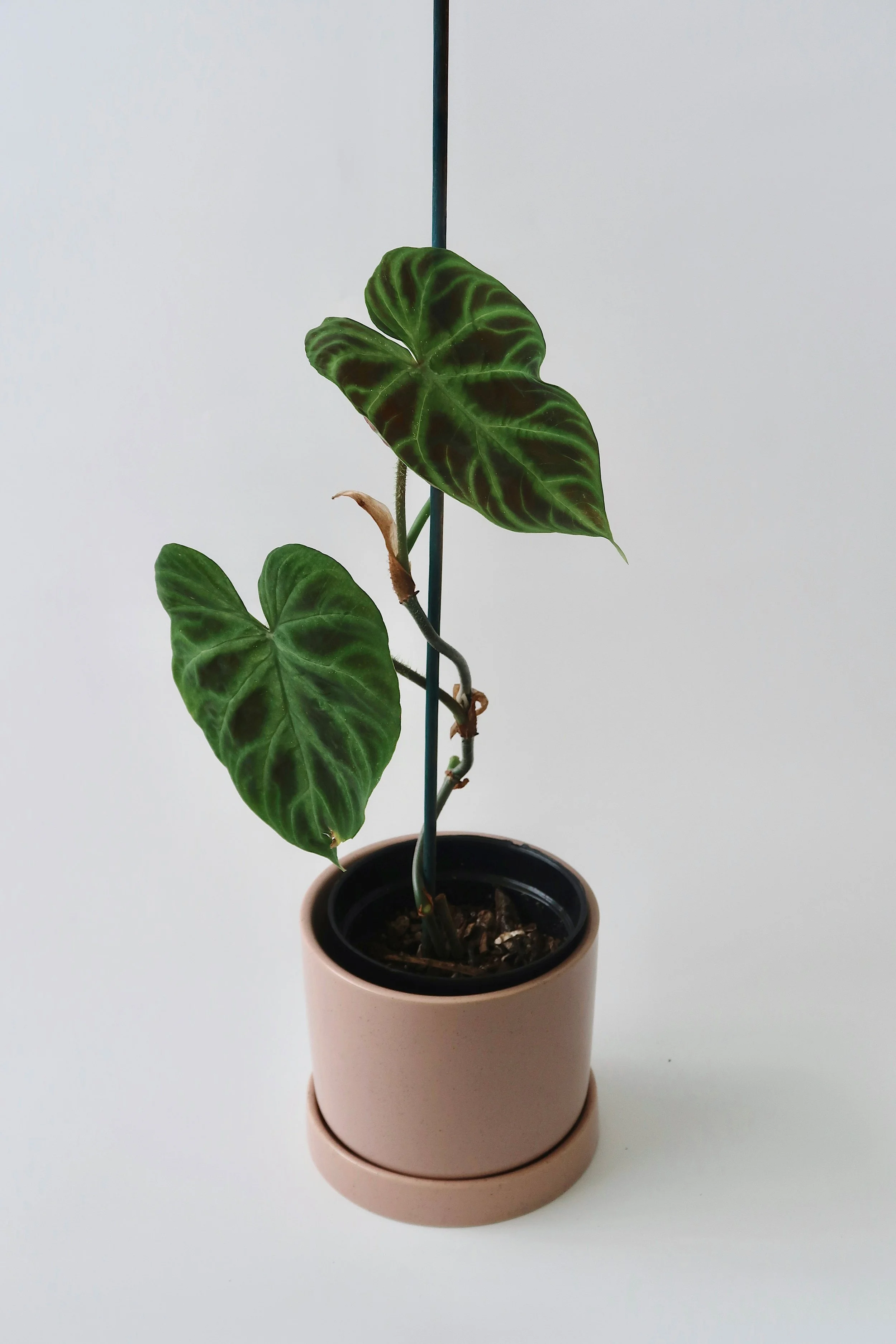Tips for Decorating Your Space with Houseplants
Hello and welcome back to "Green Life," where our love for plants turns into practical advice for you and your home. We'll cover everything from choosing the perfect plants for your space to tips on how to arrange them for the biggest impact. If you're wondering how to start your plant-filled journey or looking for new ways to arrange your leafy friends, you're in the right place. We're here to guide you through choosing the perfect plants for your space, sharing insider styling tips, and helping you keep those greens thriving.
Consider Light and Space
Begin by observing the natural light in each room throughout the day. South-facing windows soak up the most sun in places like the US and Europe, making them perfect for sun-loving plants, while in Australia and New Zealand, it's the north-facing windows that catch the most rays. On the flip side, plants that prefer a bit of shade will do better in north-facing windows in the north and south-facing ones down south. Match your plants to the available light. For example, Snake Plants and ZZ Plants are great for low-light areas, whereas species like Aloe Vera and most succulents prefer bright, direct light. If your space lacks natural light, consider using grow lights, which can provide the full spectrum of light that plants need and can be particularly effective in darker rooms or during winter months.
Assess the size of the room and the scale of the furniture. A large plant in a small room can feel overwhelming, while small plants in a large room might get lost. Aim for a balance that complements your space. Use plants to accentuate or define areas in your room. For example, a tall plant can highlight a high ceiling, while a series of small plants can draw attention to a shelf or mantle. Grouping plants with varying heights, textures, and colours can create an eye-catching display. Use shelves, stands, or different pot heights to add dimension and interest. Consider the growth pattern of your plants. Some might grow taller or wider and will need space to expand. Ensure there’s room for growth so your plants don't become cramped or hindered.
Be aware that the intensity and duration of natural light change with seasons. Some plants may need to be moved to different locations in your home to receive adequate light throughout the year. Alongside light, consider the temperature and the presence of drafts near your plants. Avoid placing plants near heating or cooling vents, as sudden temperature changes can be harmful.
Create a Focal Point
Creating a focal point with houseplants is a dynamic way to draw the eye and introduce a sense of drama into any interior space. This approach centres around choosing either a standout plant or a carefully selected assembly of plants that command immediate attention, anchoring the space with their distinct presence. To effectively achieve this, opt for a statement plant with unique features such as the towering elegance of a fiddle leaf fig, the expansive reach of a monstera, or the dramatic lines of a bird of paradise. These plants boast bold foliage and impressive stature, making them perfect centrepieces.
The choice of container for your plant plays a crucial role as well. A pot that is beautiful, ornate, or brightly coloured can both complement and enhance the plant's impact, serving as a critical element of the focal point. Consider the material, texture, and colour of the container to either match or contrast with your existing room decor.
Placement is crucial for maximizing the impact of your focal plant. Situating it in a well-lit corner of your living room, beside a generously lit window, or at a hallway's end can make all the difference. It's important to ensure that the chosen location not only highlights the plant but also meets its light and care requirements to keep it thriving.
Enhancing your focal point with smaller, complementary plants can add layers of depth and interest to the space. This not only elevates the visual appeal but also makes your focal plant stand out even more. Additionally, incorporating plant stands or hanging planters to introduce varied heights can draw the eye upwards and add a new dimension to the room, particularly effective in areas with high ceilings or spaces that would benefit from a vertical touch.
By thoughtfully selecting and placing a focal point plant, you transform a simple room into a vibrant, inviting haven. This living centrepiece not only adds beauty and character but also enriches the ambience, making the space more pleasant and welcoming.
Utilize Vertical Space
Utilizing vertical space is a creative and efficient way to bring houseplants into your home decor, particularly when floor space is at a premium. This method not only conserves precious floor area but also introduces a new layer of interest to your indoor garden.
One stylish approach to vertical planting is the use of wall-mounted planters. These can vary from basic pots attached to the wall to complex living wall systems. They're perfect for creating a living art display in any room and can support a wide variety of plants, from lush ferns and trailing ivies to aromatic herbs.
Another classic option is hanging baskets. Dangling from the ceiling or a high shelf, they’re ideal for plants like Pothos, String of Pearls, or Spider Plants, which spill over with foliage, creating a stunning green cascade.
For those who prefer something more grounded, tall shelving units offer a great solution. They allow you to place plants at different levels, effectively turning a simple shelf into a diverse indoor garden. This setup is great for showcasing a mix of plants, each with its own unique care and light needs.
If you have a bit of floor space, consider using a trellis or climbing frame. This encourages vining plants like Philodendrons, Ivy, or Climbing Figs to grow upwards, creating a dramatic and beautiful green wall.
Window shelves present another fantastic opportunity, especially for sun-loving plants. Placing shelves in sunny windows not only maximizes light exposure but also transforms the window into a lush, vibrant focal point.
Incorporating plants into vertical spaces not only saves space but can completely transform the ambiance of a room, filling it with life and greenery. It’s a wonderful solution for smaller apartments or any room where maximizing space is key. With a touch of creativity, these vertical gardens can turn an ordinary space into a verdant, eye-catching haven.
Add Freshness to Functional Areas
Adding freshness to functional areas with houseplants is a transformative way to enliven spaces that often go unnoticed for their decorative potential. By integrating greenery into areas like the kitchen, bathroom, and home office, you not only elevate the aesthetic appeal but also introduce an element of vitality and freshness that enhances the overall ambience of these spaces.
Kitchens and bathrooms, for instance, are perfect for certain types of houseplants. These areas typically have higher humidity and can be ideal for moisture-loving plants. In kitchens, small herb gardens on windowsills not only bring in fresh flavors right at your fingertips but also add a burst of greenery. Plants like Basil, Mint, or Chives are great choices. They thrive in the bright light most kitchens receive and are practical for everyday cooking.
Bathrooms can be turned into mini tropical retreats with the right plants. Varieties like Boston Ferns, Peace Lilies, and Orchids love the humid environment that bathrooms provide. Placing a few potted plants on open shelves or in hanging baskets can instantly elevate the space, making your bathroom feel like a spa.
Home offices or study areas are another great spot for houseplants. Plants in your workspace can boost mood and productivity. Small desk plants like succulents or Snake Plant don’t take up much space but can significantly impact your work environment, cleaning the air and offering a peaceful green view during your workday.
Even laundry rooms can benefit from a bit of greenery. A small shelf with a row of easy-care plants like Pothos or Philodendron can add a touch of warmth and soften the utilitarian feel of the space.
Incorporating houseplants into these functional areas not only beautifies the space but also brings in a natural element that can make daily routines more enjoyable. The key is to choose plants that can adapt to the specific conditions of each area, whether it's the steamy atmosphere of a bathroom or the fluctuating temperatures of a kitchen. With the right selection, these functional spaces can be transformed into refreshing green nooks that enhance both the aesthetics and the atmosphere of your home.
Play with Leaves and Color
Playing with leaves and colour through houseplants is a delightful way to add dynamic visual interest and mood-enhancing vibrancy to your home. This approach involves selecting plants not just for their greenery but for the variety of textures, shapes, and hues their foliage offers.
Combining plants with different leaf textures creates a rich, tactile landscape in your home. Pair the glossy, smooth leaves of a Rubber Plant with the feathery fronds of a Fern, or the thick, succulent leaves of an Aloe with the delicate, airiness of an Asparagus Fern. This contrast in texture adds depth and dimension to your plant displays.
The shape and size of a plant's leaves can dramatically affect the appearance of a space. Large, broad leaves can make a bold statement and fill a room with presence, while slender, trailing leaves can add a touch of whimsy and movement. Arrange broad-leafed plants like Philodendrons alongside finer-leafed varieties like the String of Hearts for a visually engaging display.
While green is the colour most commonly associated with houseplants, many varieties offer leaves in shades of red, yellow, purple, and even silver. Plants like the Croton boast leaves in fiery tones, while the Purple Waffle Plant offers a splash of deep purple. Integrating these colourful plants among green foliage can create focal points and draw the eye, adding a lively burst of colour to any room.
Some plants change colour or leaf intensity with the seasons, offering an ever-evolving display. Paying attention to these changes and placing these plants where they can be appreciated up close can add an element of surprise and delight to your indoor garden.
Conclusion
Decorating with houseplants is an enjoyable and rewarding way to bring life into your home. It’s about finding the right balance between the needs of your plants and your personal style. Experiment, have fun, and watch as your space transforms into a lush indoor oasis.










